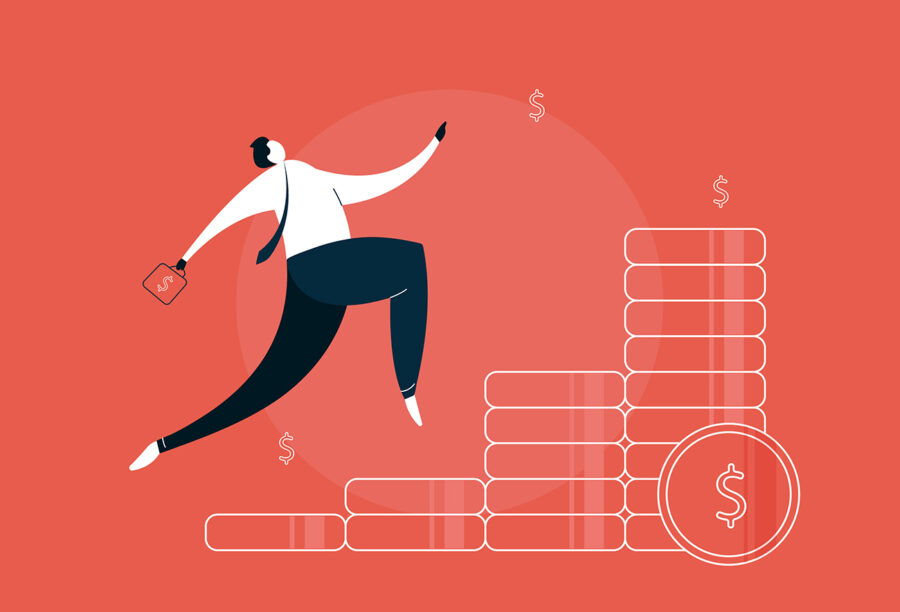The following article was originally published on Penn Today.
Does money buy happiness? Though it seems like a straightforward question, research had previously returned contradictory findings, leaving uncertainty about its answer.
Foundational work published in 2010 from Princeton University’s Daniel Kahneman and Angus Deaton had found that day-to-day happiness rose as annual income increased, but above $75,000 it leveled off and happiness plateaued. In contrast, work published in 2021 from the University of Pennsylvania’s Matthew Killingsworth found that happiness rose steadily with income well beyond $75,000, without evidence of a plateau.
To reconcile the differences, Kahneman and Killingsworth paired up in what’s known as an adversarial collaboration, joining forces with Penn Integrates Knowledge University Professor Barbara Mellers as arbiter. In a new Proceedings of the National Academy of Sciences paper, the trio shows that, on average, larger incomes are associated with ever-increasing levels of happiness. Zoom in, however, and the relationship becomes more complex, revealing that within that overall trend, an unhappy cohort in each income group shows a sharp rise in happiness up to $100,000 annually and then plateaus.
“In the simplest terms, this suggests that for most people larger incomes are associated with greater happiness,” says Killingsworth, a senior fellow at Wharton and lead paper author. “The exception is people who are financially well-off but unhappy. For instance, if you’re rich and miserable, more money won’t help. For everyone else, more money was associated with higher happiness to somewhat varying degrees.”
Mellers digs into this last notion, noting that emotional well-being and income aren’t connected by a single relationship. “The function differs for people with different levels of emotional well-being,” she says. Specifically, for the least happy group, happiness rises with income until $100,000, then shows no further increase as income grows. For those in the middle range of emotional well-being, happiness increases linearly with income, and for the happiest group the association actually accelerates above $100,000.
Joining Forces to Ask: “Does Money Buy Happiness?”
The researchers began this combined effort recognizing that their previous work had drawn different conclusions. Kahneman’s 2010 study showed a flattening pattern where Killingsworth’s 2021 study did not. As its name suggests, an adversarial collaboration of this type — a notion originated by Kahneman — aims to solve scientific disputes or disagreements by bringing together the differing parties, along with a third-party mediator.
Killingsworth, Kahneman, and Mellers focused on a new hypothesis that both a happy majority and an unhappy minority exist. For the former, they surmised, happiness keeps rising as more money comes in; the latter’s happiness improves as income rises but only up to a certain income threshold, after which it progresses no further.
To test this new hypothesis, they looked for the flattening pattern in data from Killingworth’s study, which he had collected through an app he created called Track Your Happiness. Several times a day, the app pings participants at random moments, asking a variety of questions including how they feel on a scale from “very good” to “very bad.” Taking an average of the person’s happiness and income, Killingsworth draws conclusions about how the two variables are linked.
A breakthrough in the new partnership came early on when the researchers realized that the 2010 data, which had revealed the happiness plateau, had actually been measuring unhappiness in particular rather than happiness in general.
“It’s easiest to understand with an example,” Killingsworth says. Imagine a cognitive test for dementia that most healthy people pass easily. While such a test could detect the presence and severity of cognitive dysfunction, it wouldn’t reveal much about general intelligence since most healthy people would receive the same perfect score.
“In the same way, the 2010 data showing a plateau in happiness had mostly perfect scores, so it tells us about the trend in the unhappy end of the happiness distribution, rather than the trend of happiness in general. Once you recognize that, the two seemingly contradictory findings aren’t necessarily incompatible,” Killingsworth says. “And what we found bore out that possibility in an incredibly beautiful way. When we looked at the happiness trend for unhappy people in the 2021 data, we found exactly the same pattern as was found in 2010; happiness rises relatively steeply with income and then plateaus.”
“The two findings that seemed utterly contradictory actually result from data that are amazingly consistent,” he says.
Does It Matter Whether Money Can Buy Happiness?
Drawing these conclusions would have been challenging had the two research teams not come together, says Mellers, who suggests there’s no better way than adversarial collaborations to resolve scientific conflict.
“This kind of collaboration requires far greater self-discipline and precision in thought than the standard procedure,” she says. “Collaborating with an adversary — or even a non-adversary — is not easy, but both parties are likelier to recognize the limits of their claims.” Indeed, that’s what happened, leading to a better understanding of the relationship between money and happiness.
And these findings have real-world implications, according to Killingsworth. For one, they could inform thinking about tax rates or how to compensate employees. And, of course, they matter to individuals as they navigate career choices or weigh a larger income against other priorities in life, Killingsworth says.
However, he adds that for emotional well-being money isn’t the be all end all. “Money is just one of the many determinants of happiness,” he says. “Money is not the secret to happiness, but it can probably help a bit.”



